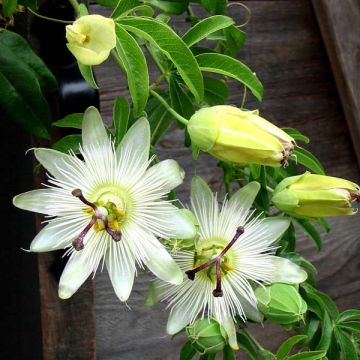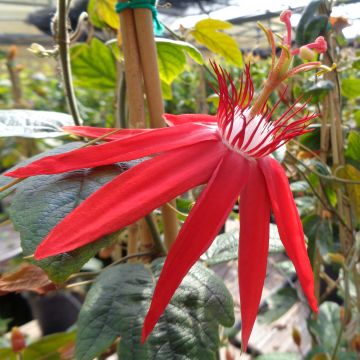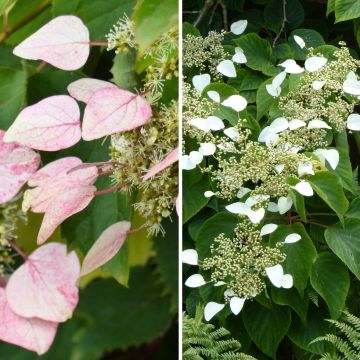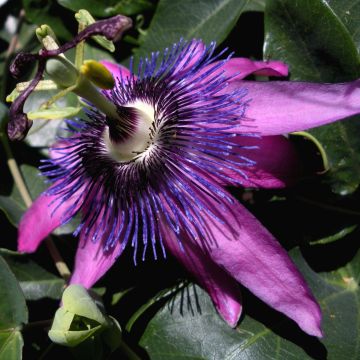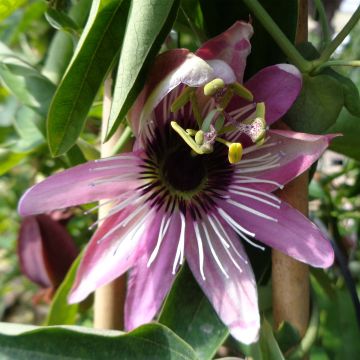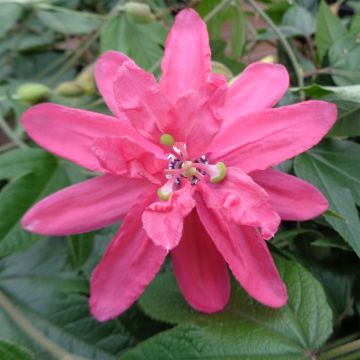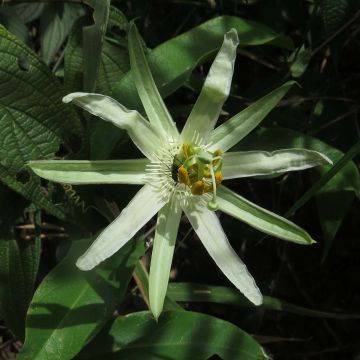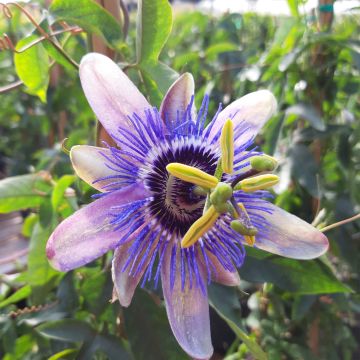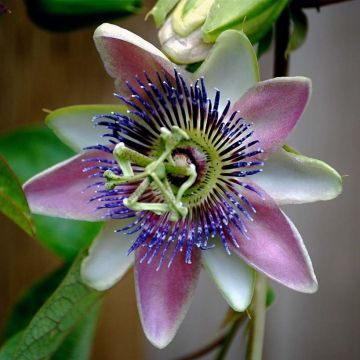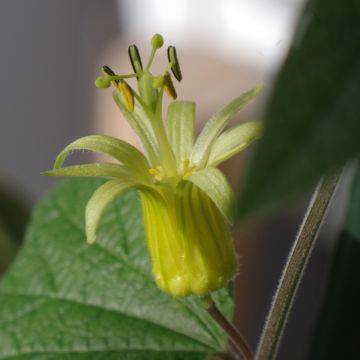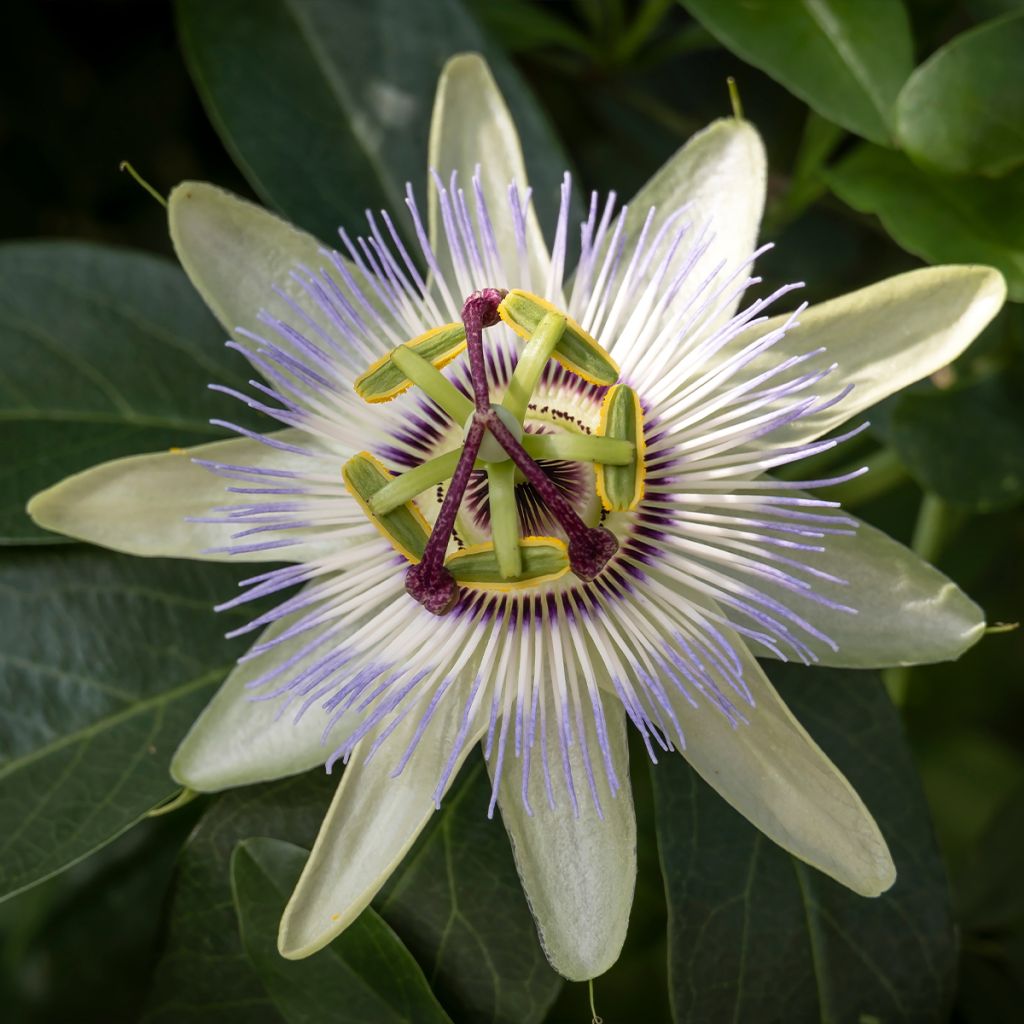

Passiflora caerulea Clear Sky- Passion Flower
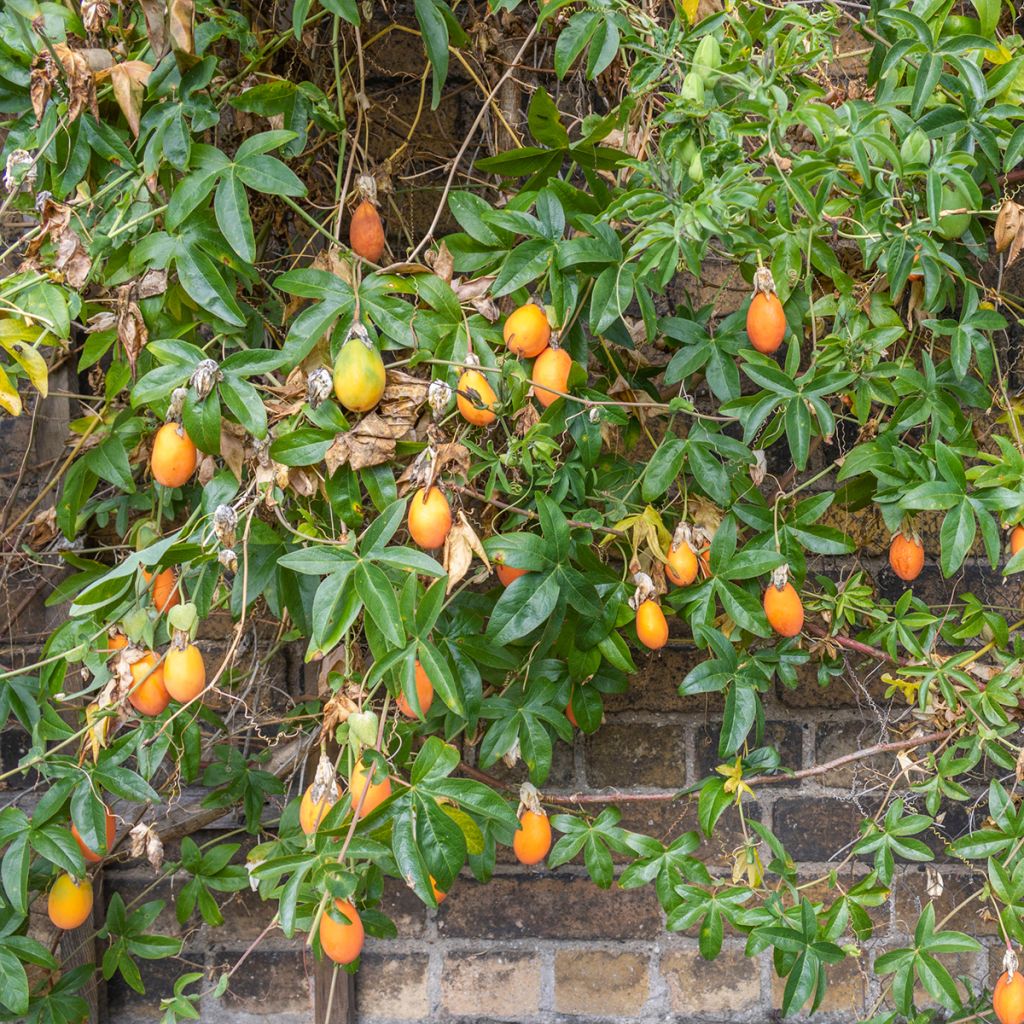

Passiflora caerulea Clear Sky- Passion Flower
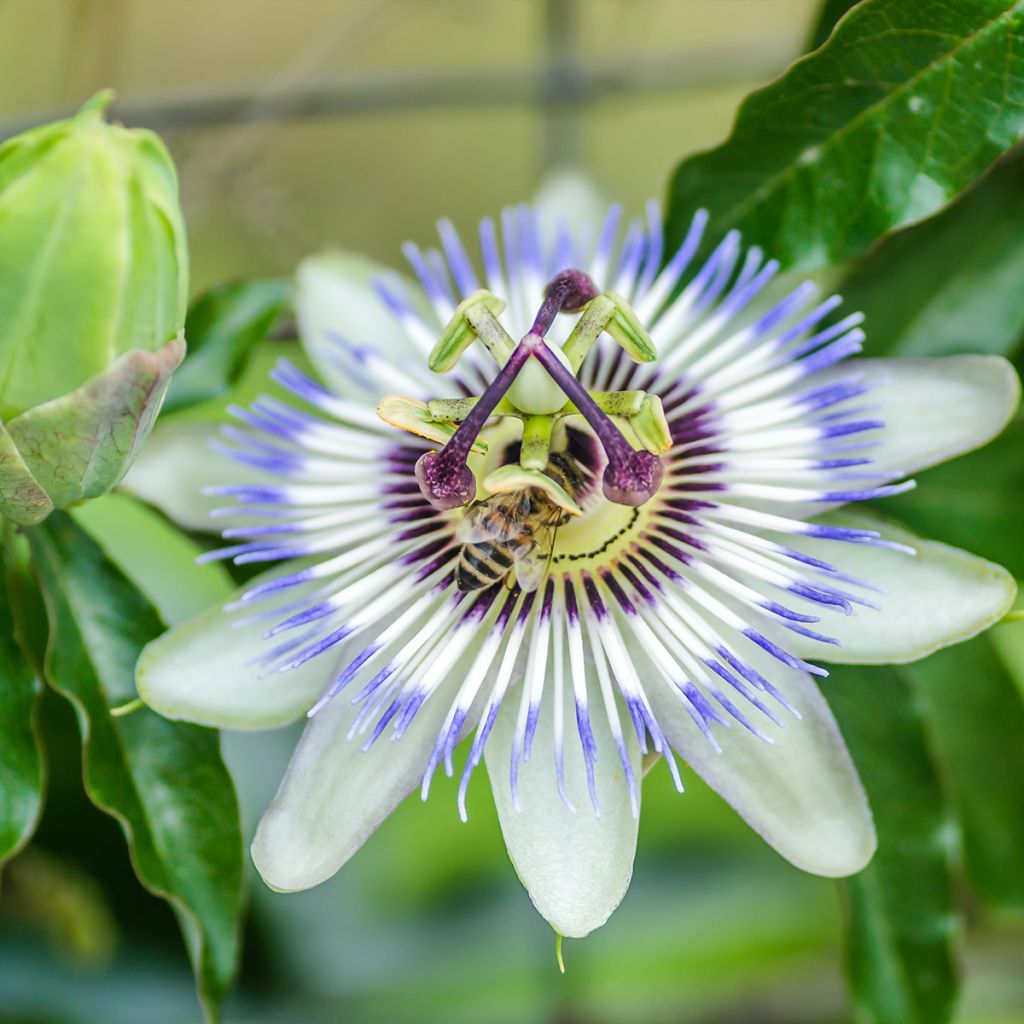

Passiflora caerulea Clear Sky- Passion Flower
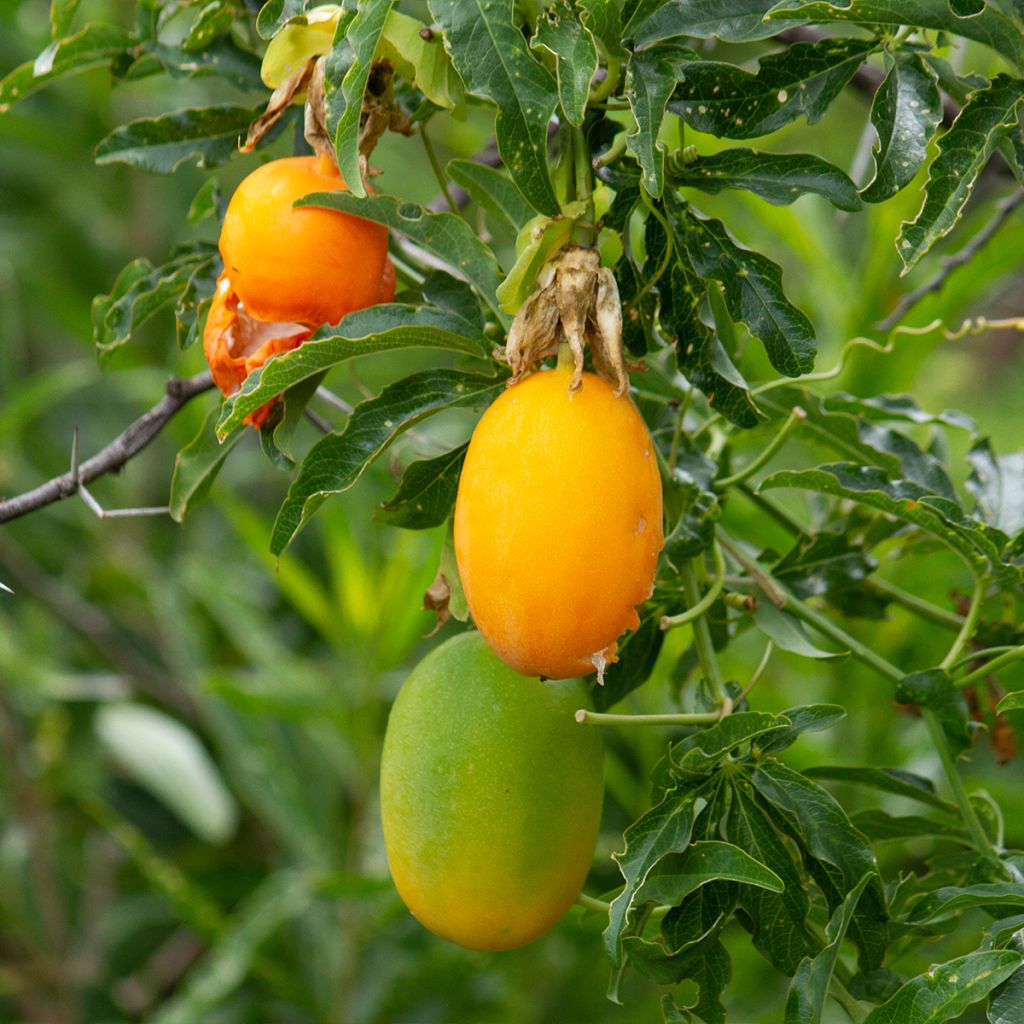

Passiflora caerulea Clear Sky- Passion Flower
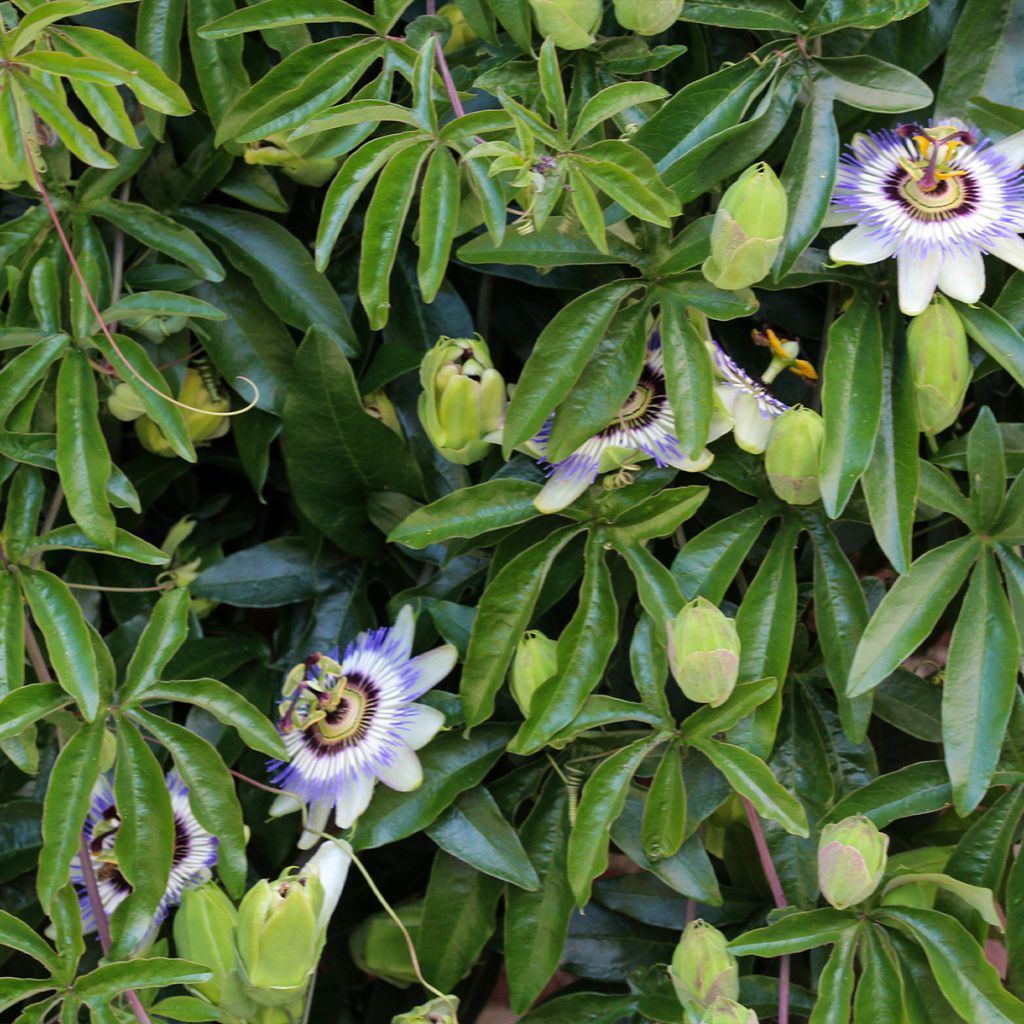

Passiflora caerulea Clear Sky- Passion Flower
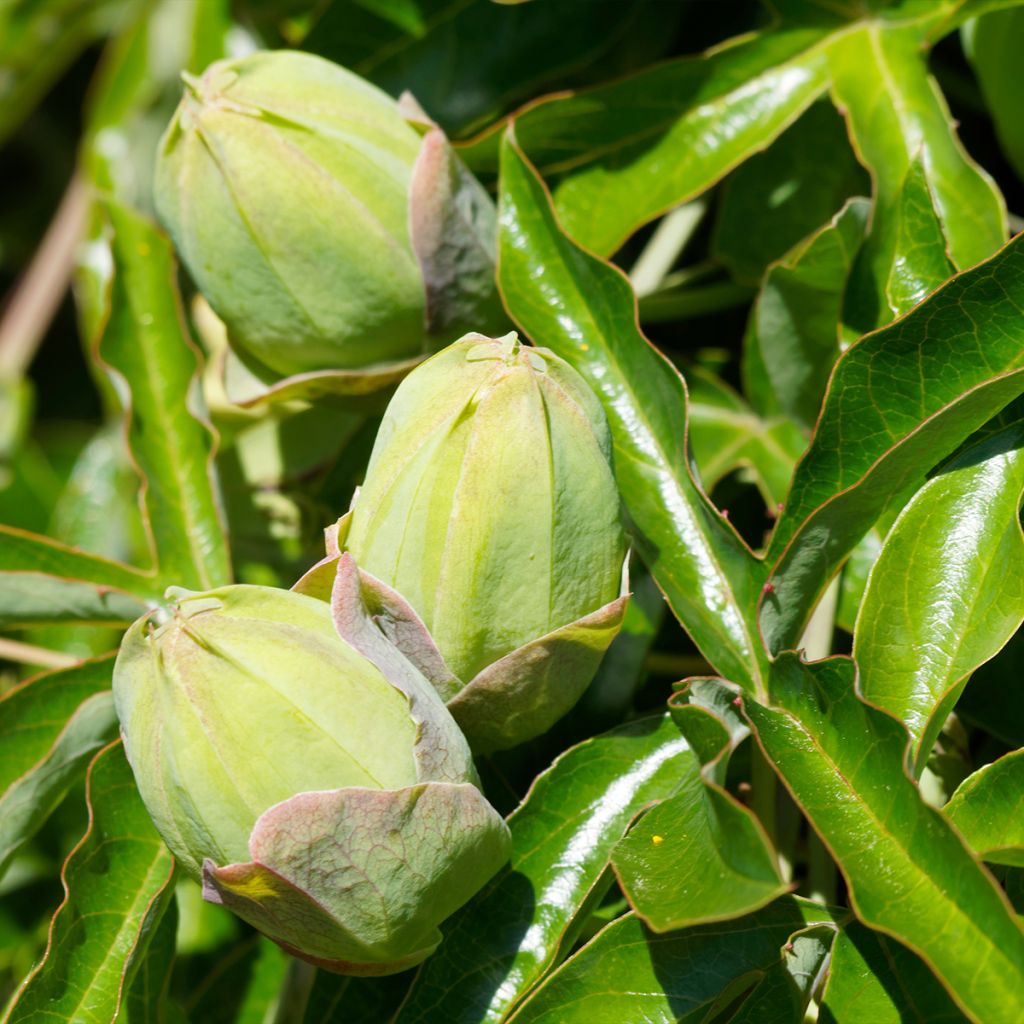

Passiflora caerulea Clear Sky- Passion Flower
Passiflora caerulea Clear Sky- Passion Flower
Passiflora caerulea Clear Sky®
Blue Passionflower, Common Passionflower
This item cannot be shipped to the selected country
Delivery charge from €5.90
More information
Delivery charge from €5.90
More information
Schedule delivery date,
and select date in basket
This plant carries a 6 months recovery warranty
More information
We guarantee the quality of our plants for a full growing cycle, and will replace at our expense any plant that fails to recover under normal climatic and planting conditions.
From €5.90 for pickup delivery and €6.90 for home delivery
Express home delivery from €8.90.
Does this plant fit my garden?
Set up your Plantfit profile →
Description
The Passiflora caerulea 'Clear Sky', also known as passionflower or blue passion flower, is a vigorous perennial climbing plant, reasonably hardy, semi-evergreen, clinging to its support thanks to its tendrils. Throughout the summer, it produces flowers slightly paler than the species but larger and more resistant to full sun. They have an exotic and graphic appearance that leaves no one indifferent. White-blue in colour, adorned with a collar of tricoloured filaments, light blue, white, and purple, they are followed after a hot summer by orange fruits, edible but tasteless. This highly decorative rambler displays an excellent resistance to frost. It should be grown in the sun, in well-drained ordinary soil, even limestone.
Primarily native to tropical areas of South America, Passiflores belong to the family Passifloraceae, of which they are the most widespread genus, with the others being known only to collectors. There are more than 500 species of Passiflora, as well as numerous spontaneous or horticultural hybrids. They are mostly tropical plants, but some species are subtropical and can survive winter in mild and sheltered areas. Passiflora caerulea is one of the hardiest, capable of withstanding temperatures as low as -12 °C (10.4°F), and therefore is probably the most commonly planted.
'Clear Sky' is a tetraploid variety (meaning it has twice the normal number of chromosomes) obtained by German breeder Roland Fisher. Polyploidy (multiplication of the chromosome stock) enhances certain desirable traits in plants. Starting with a cross involving the Emil Kugler variety, Dr. Fisher obtained 'Clear Sky', which has larger flowers than the botanical blue passionflower. Clear Sky's flowers are also paler and more resistant to full sun. This climbing plant reaches a height of 3m (10ft) and a width of approximately 1.50m (5ft), but it can grow taller in favourable climates and without pruning to limit its growth. Its beautiful deep green foliage, deeply lobed, is semi-evergreen, meaning it falls off in cold winters but remains evergreen in mild climates. The flowers have the same sophisticated structure as the botanical species, with ten petals and sepals that look similar but are whiter. The decorative crown of filaments in Passiflores is dark purple at the base, then white in the middle, and light blue at the tip, vaguely resembling a British cockade... The central sexual floral parts are green and yellow for the stamens and purple striped for the pistil, contrasting the white petals and sepals. This highly sophisticated floral ensemble contributes to the fascination exerted by this plant, which has been associated with the passion of Christ for several centuries, with each floral element having its specific meaning (the Apostles, the nails of the crucifixion...). In Clear Sky, the flowers are very large, reaching a diameter of 11cm (4in), and bloom from May to October. If the summer is hot enough, they develop into decorative orange egg-shaped fruits, edible but tasteless.
The 'Clear Sky' passionflower is a fast-growing, rambling plant that clings to its support with tendrils. The well-protected stump of this passionflower can withstand temperatures as low as -8 °C (17.6°F) to -10 °C (14°F). It can be grown in a container in colder climates to protect it during winter.
If your climate allows planting it in the ground, know that it thrives in most soils (pH 5.6 to 7.8), slightly moist but well-drained for winter survival. Remember to water it in the summer in Mediterranean coastal climates.
The blue 'Clear Sky' passionflower is perfect for covering fences, trellises, unsightly fences, or old sunny walls in the south or west. Provide it with a sheltered position away from winds. It is an excellent companion for other climbing plants. To enhance the exotic aspect of this passionflower, pair it with Campsis capreolata (or Bignonia capreolata), a vine with stunning red and yellow trumpet-shaped flowers that smell like chocolate! The Jasminum officinale, with its intoxicating perfume, will also be a perfect companion to complete this tropical-looking scene in mild temperate climates.
Passiflora caerulea Clear Sky- Passion Flower in pictures
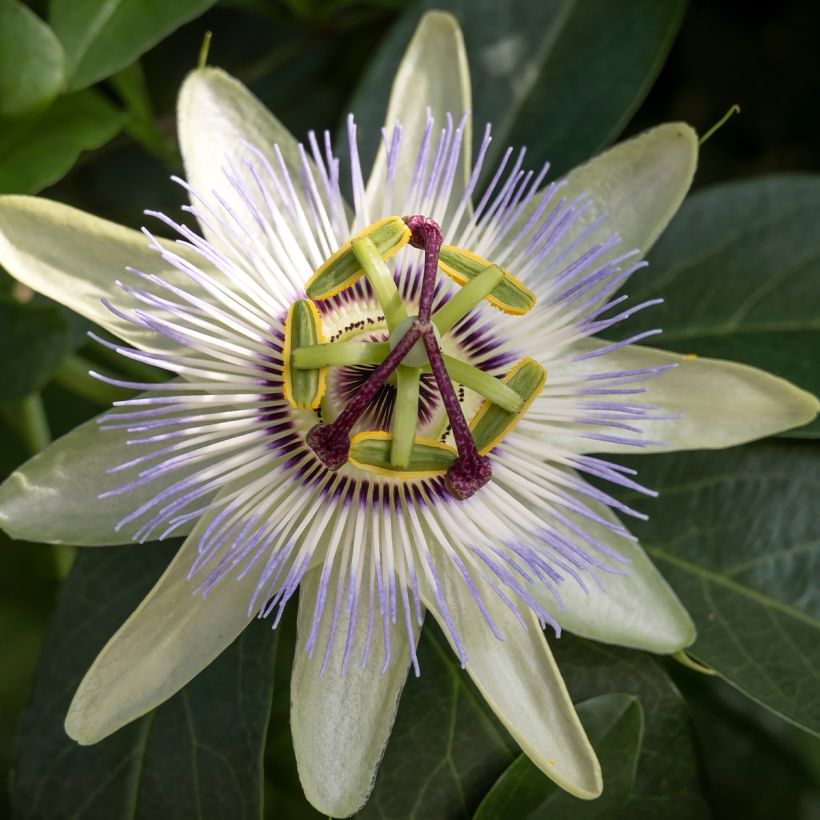

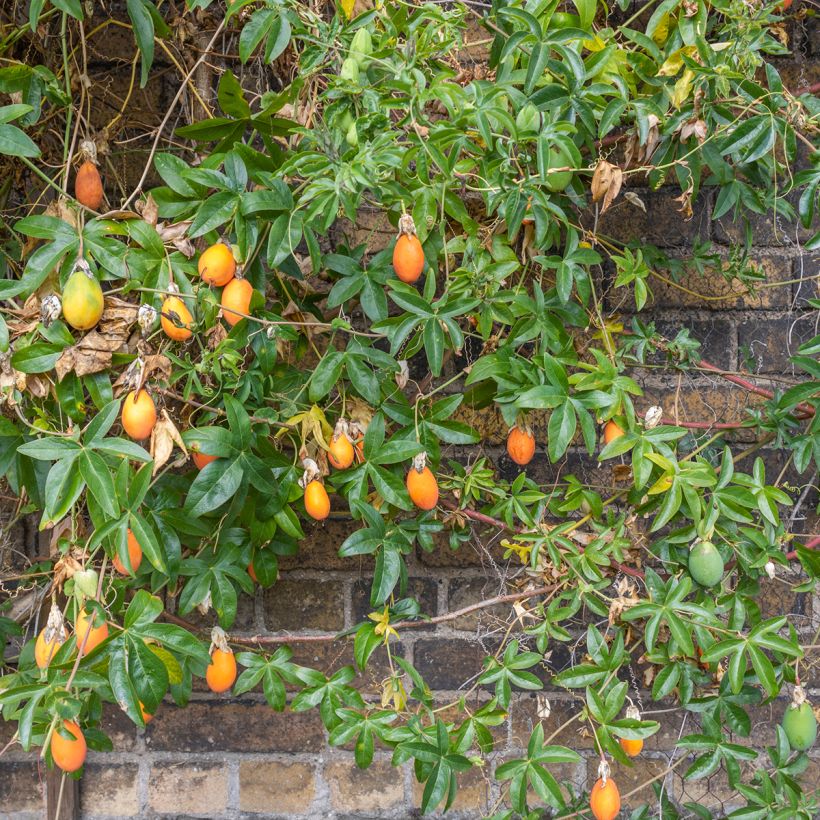

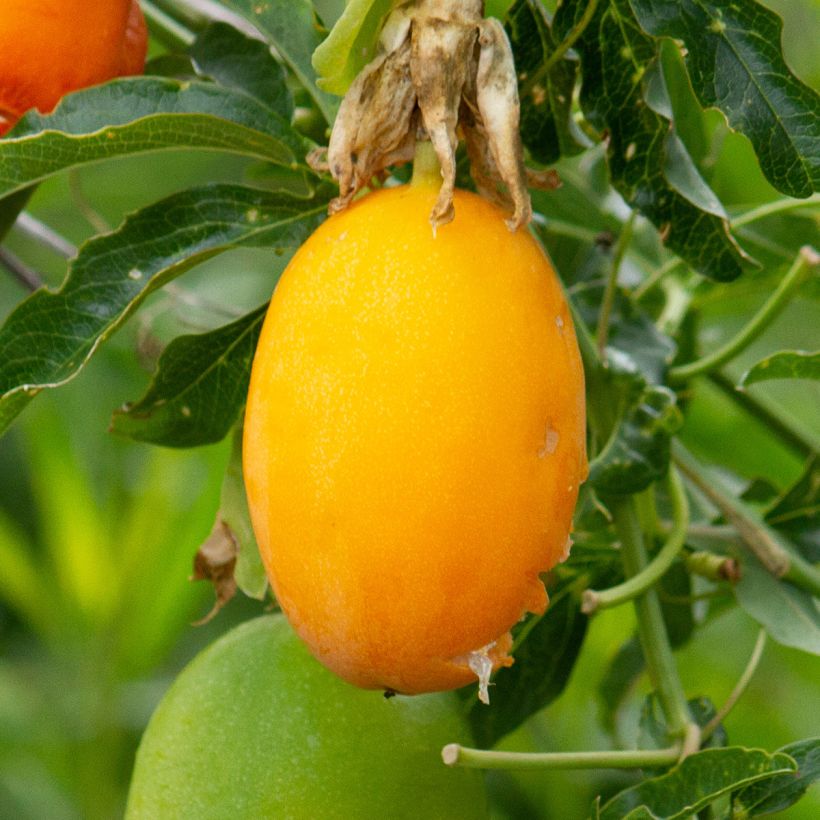

Plant habit
Flowering
Foliage
Botanical data
Passiflora
caerulea
Clear Sky®
Passifloraceae
Blue Passionflower, Common Passionflower
Cultivar or hybrid
Other Passionflowers
Planting and care
This passionflower can be planted in the ground in climates that are not too cold, tolerating frost down to -8°C (17.6°F) to -10°C (14°F). In cooler climates, plant it against a well-exposed wall or in a container to bring it indoors to a frost-free room with minimal light, such as a garage with a window or similar. This climbing plant adapts to a wide variety of soils as long as they are well-drained, as excess water in winter would be fatal. Ordinary slightly sandy soil is suitable, and you can also add gravel to the planting hole to improve drainage if your soil is very clayey. However, it is important to know that it needs some humidity to thrive, but not during the winter.
In hot climates, this plant should be grown in partial shade. However, in all other regions, it requires a sunny location. Once it has taken root properly, it is a low-maintenance plant, except for a brief pruning session each spring to promote the regeneration of its foliage.
Planting period
Intended location
Care
This item has not been reviewed yet - be the first to leave a review about it.
Haven't found what you were looking for?
Hardiness is the lowest winter temperature a plant can endure without suffering serious damage or even dying. However, hardiness is affected by location (a sheltered area, such as a patio), protection (winter cover) and soil type (hardiness is improved by well-drained soil).

Photo Sharing Terms & Conditions
In order to encourage gardeners to interact and share their experiences, Promesse de fleurs offers various media enabling content to be uploaded onto its Site - in particular via the ‘Photo sharing’ module.
The User agrees to refrain from:
- Posting any content that is illegal, prejudicial, insulting, racist, inciteful to hatred, revisionist, contrary to public decency, that infringes on privacy or on the privacy rights of third parties, in particular the publicity rights of persons and goods, intellectual property rights, or the right to privacy.
- Submitting content on behalf of a third party;
- Impersonate the identity of a third party and/or publish any personal information about a third party;
In general, the User undertakes to refrain from any unethical behaviour.
All Content (in particular text, comments, files, images, photos, videos, creative works, etc.), which may be subject to property or intellectual property rights, image or other private rights, shall remain the property of the User, subject to the limited rights granted by the terms of the licence granted by Promesse de fleurs as stated below. Users are at liberty to publish or not to publish such Content on the Site, notably via the ‘Photo Sharing’ facility, and accept that this Content shall be made public and freely accessible, notably on the Internet.
Users further acknowledge, undertake to have ,and guarantee that they hold all necessary rights and permissions to publish such material on the Site, in particular with regard to the legislation in force pertaining to any privacy, property, intellectual property, image, or contractual rights, or rights of any other nature. By publishing such Content on the Site, Users acknowledge accepting full liability as publishers of the Content within the meaning of the law, and grant Promesse de fleurs, free of charge, an inclusive, worldwide licence for the said Content for the entire duration of its publication, including all reproduction, representation, up/downloading, displaying, performing, transmission, and storage rights.
Users also grant permission for their name to be linked to the Content and accept that this link may not always be made available.
By engaging in posting material, Users consent to their Content becoming automatically accessible on the Internet, in particular on other sites and/or blogs and/or web pages of the Promesse de fleurs site, including in particular social pages and the Promesse de fleurs catalogue.
Users may secure the removal of entrusted content free of charge by issuing a simple request via our contact form.

































